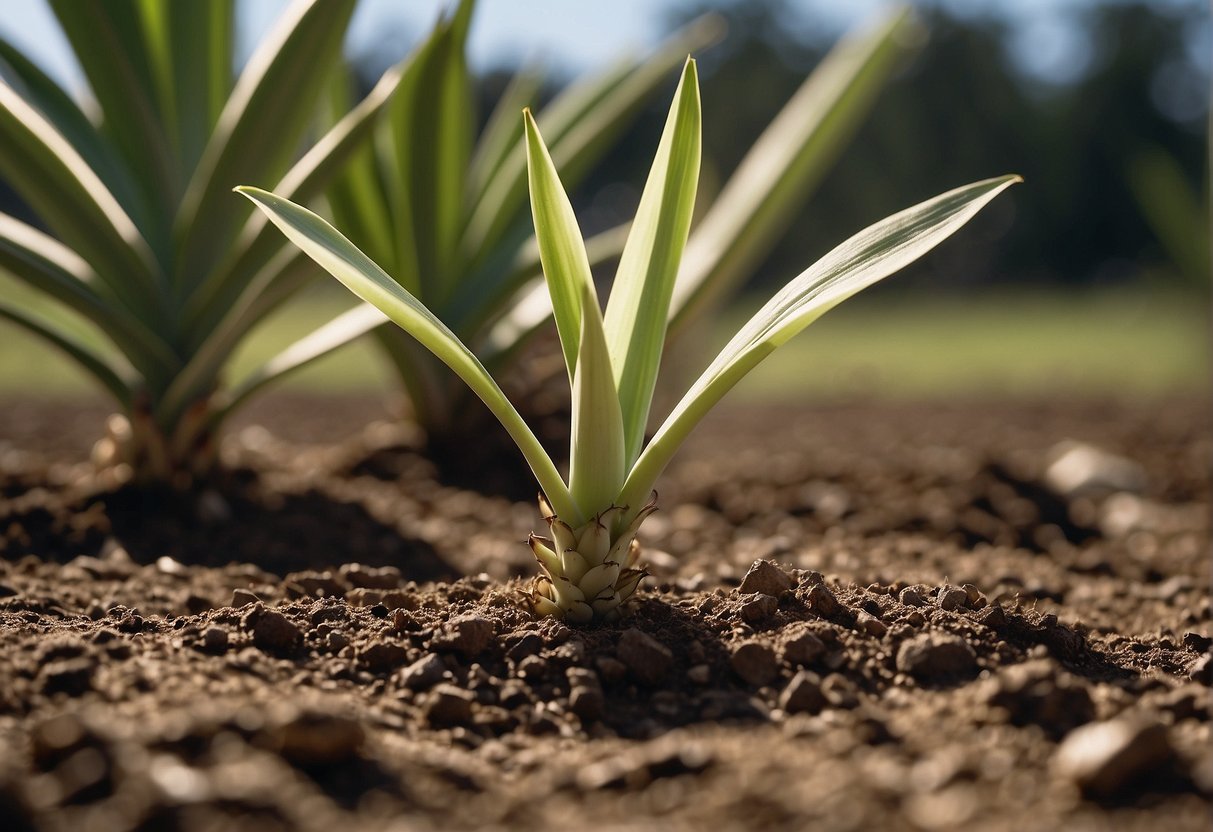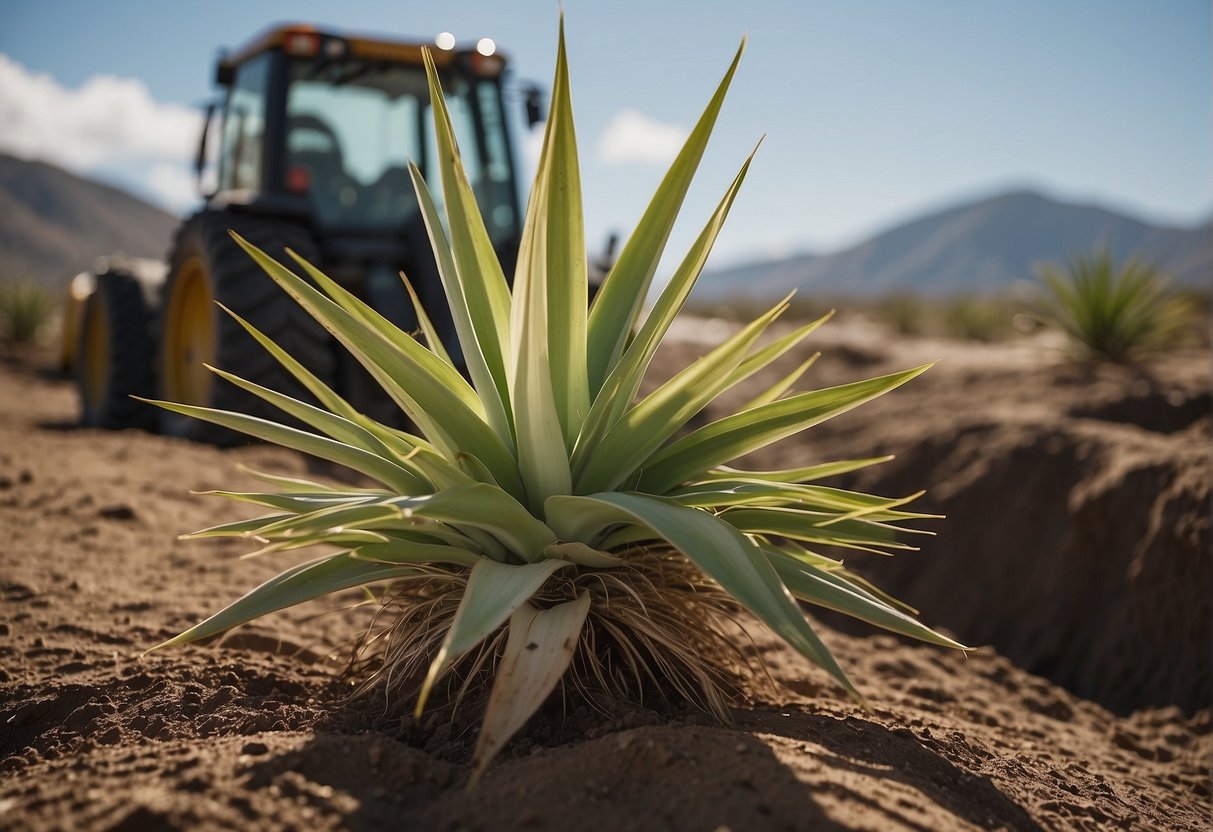If your garden could use a bit of diversity, consider adding yucca plants to the mix. Yucca plants are resilient, capable of flourishing in various environments, which is why they are often favored by garden enthusiasts. Nonetheless, the process of transplanting yucca plants might pose some challenges if you’re not well-versed in the technique. In this piece, we aim to guide you through the essential steps to ensure a successful transplantation of your yucca plants.

Before you start transplanting your yucca plants, there are a few things you need to do to prepare. First, you’ll need to choose a new location for your plants. Yucca plants prefer well-drained soil and plenty of sunlight, so be sure to choose a spot that meets these requirements. You’ll also need to dig a hole that’s big enough to accommodate the root ball of your yucca plant. Once you’ve chosen a spot and dug your hole, it’s time to start transplanting your yucca plants.
Key Takeaways
- Choose a well-drained, sunny location for your yucca plants.
- Dig a hole that’s big enough to accommodate the root ball of your plant.
- Transplant your yucca plants carefully to avoid damaging the roots.
Preparing for Transplantation
When it comes to transplanting yucca plants, proper preparation is key to ensuring success. In this section, we’ll cover three important steps to take before you begin the transplanting process.
Determining the Best Time to Transplant
The best time to transplant yucca plants is in the spring or fall when the weather is mild. This is because extreme temperatures can put stress on the plant and make it more difficult to establish in its new location. If you live in an area with mild winters, you may also be able to transplant your yucca during the winter months.
Selecting the New Location
When selecting a new location for your yucca plant, it’s important to choose a spot that receives plenty of sunlight. Yucca plants thrive in well-draining soil, so be sure to choose a location that will provide good drainage. If you’re transplanting your yucca to a pot, make sure the pot has drainage holes.
Preparing the Yucca for Removal
Before you begin the transplanting process, it’s important to prepare the yucca plant for removal. Start by watering the plant thoroughly a day or two before you plan to transplant it. This will help to loosen the soil and make it easier to remove the plant without damaging the root system.
If you notice any signs of disease or pest infestation on your yucca plant, it’s important to address these issues before transplanting. Yucca plants are hardy and low-maintenance, but they can still be susceptible to certain pests and diseases.
By following these steps to prepare for transplanting your yucca plant, you’ll be setting yourself up for success. With proper preparation, your yucca plant should be able to establish itself in its new location and continue to thrive for years to come.
Transplanting the Yucca

Transplanting a yucca plant can be a bit tricky, but with the right tools and techniques, it can be done successfully. Here are the steps to transplant your yucca plant:
Removing the Yucca Plant
- Choose a new location for your yucca plant that has full sunlight and well-draining soil.
- Water your yucca plant a day or two before transplanting to make the soil easier to work with.
- Use a sharp shovel to dig around the root ball of the yucca plant. Be sure to dig deep enough to get the entire root system.
- Gently lift the yucca plant out of the ground, being careful not to damage the roots.
Planting in the New Location
- Dig a hole in the new location that is slightly larger than the root ball of the yucca plant.
- Mix organic matter, compost, and sand into the soil to improve drainage and add nutrients.
- Place the yucca plant in the hole and backfill with the amended soil.
- Water the yucca plant thoroughly to help settle the soil.
Post-Transplant Care
- Mulch around the base of the yucca plant to help retain moisture and regulate soil temperature.
- Water the yucca plant regularly, but be careful not to overwater as yucca plants are drought-tolerant and can be damaged by too much moisture.
- Fertilize the yucca plant once a month during the growing season with a balanced fertilizer.
- If transplanting to a pot, choose a pot that is slightly larger than the root ball and use well-draining potting soil.
- Ensure the soil type and pH level are appropriate for yucca plants.
- Make sure the pot has drainage holes to prevent overwatering.
- Yucca plants can tolerate hot summers and cold winters, but may need protection in extreme temperatures.
By following these steps and providing proper care, your yucca plant should thrive in its new location.
Frequently Asked Questions

What is the best season to relocate a yucca plant?
The best time to transplant a yucca plant is during the spring or fall when the temperatures are mild. Avoid transplanting during the summer when the heat can stress the plant or during the winter when the plant is dormant.
Can yucca plants be successfully divided for propagation?
Yes, yucca plants can be divided for propagation. The best time to divide a yucca plant is during the spring or fall when the plant is actively growing. Use a sharp, clean knife to divide the plant and make sure each section has roots attached.
What is the proper technique for digging up a yucca plant?
To dig up a yucca plant, start by watering it thoroughly a day or two before transplanting. Use a shovel to dig around the plant, making sure to dig deep enough to get all the roots. Carefully lift the plant out of the ground, taking care not to damage the roots.
How do you prevent transplant shock in yuccas after relocation?
To prevent transplant shock in yuccas, make sure to water the plant thoroughly before and after transplanting. Keep the plant in a shaded area for a few days to help it adjust to its new environment. Avoid fertilizing the plant for a few weeks after transplanting.
Are there special considerations for transplanting yuccas in specific climates, such as Texas?
Yes, if you are transplanting yuccas in hot, dry climates like Texas, make sure to water the plant thoroughly before and after transplanting. Consider transplanting during the cooler months when the temperatures are milder. Provide shade for the plant for a few days after transplanting to help it adjust.
What size and type of pot is ideal when transplanting a yucca indoors?
When transplanting a yucca plant indoors, choose a pot that is at least 2 inches larger in diameter than the plant’s current pot. Make sure the pot has drainage holes and use a well-draining potting mix. Choose a pot that complements the plant’s size and shape.














